-
California coastal infrastructure at risk from rising sea levels
An exhaustive study by the National research Council finds projects that the sea level off most of California is likely to rise about one meter over the next century, an amount slightly higher than projected for global sea levels; this will place much of the state coastal infrastructure at risk, because significant development along the coast — such as airports, naval air stations, freeways, sports stadiums, and housing developments — has been built only a few feet above the highest tides; for example, the San Francisco International Airport could flood with as little as 40 centimeters of sea-level rise
-
-
Seeping Arctic methane to pose serious problems for Florida coastline

Large quantities of methane gas are buried under the Arctic permafrost; the melting of ice caps in the Arctic causes this gas to escape into the atmosphere through vents; until recently, cryosphere (frozen soil and ice) has served to plug or block these vents, but thawing conditions have allowed the conduits to open, and deep geologic methane now escapes; methane is a very strong greenhouse gas, and its presence in the atmosphere has grown three times faster than carbon dioxide since the industrial era
-
-
nCircle’s new solution offers coverage for six SCADA suppliers
Critical infrastructure is designated by DHS and the North American Reliability Corporation (NERC) as the assets, systems, and networks so vital to the United States that their incapacitation or destruction would have a debilitating effect on security, national economic security, and public health or safety; nCircle offers a security solution which covers vulnerabilities from six SCADA equipment suppliers
-
-
Larger role for renewable energy in U.S. future than previously thought
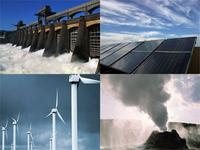
Renewable electricity generation from technologies that are commercially available today, in combination with a more flexible electric system, is more than adequate to supply 80 percent of total U.S. electricity generation in 2050 while meeting electricity demand on an hourly basis in every region of the country; new study finds that renewable generation could play a more significant role in the U.S. electricity system than previously thought
-
-
Water for central Everglades essential for reversing ecosystem's decline
Twelve years into a $13.5billion state and federal effort to save the Florida Everglades, little progress has been made in restoring the core of the ecosystem, says a new congressionally mandated report from the National Research Council; expedited restoration projects that improve the quality and amount of water in this area are necessary to reverse ongoing declines
-
-
Carbon capture and storage likely to cause earthquakes
Carbon capture and storage, or CCS, is a major component of the world’s greenhouse gas reduction strategy; to make a significant contribution to emission reduction, however, CCS would need to operate on a massive scale, potentially sequestering upward of 3.5 billion metric tons of CO2 each year; researchers say that the injection of massive quantities of CO2 would be likely to induce small temblors which would break the reservoirs’ seals and release the stored CO2 into the atmosphere
-
-
3-in-1 water monitoring system
All water treatment plants using membrane technology are required to be able to perform three processes to comply with international standards: identify whether there are any bacteria or contaminants; detect any broken membrane filters in the treatment plant; and pinpoint which filter is broken — accurate to 1 in 100,000 filters; a new, innovative device performs all three processes
-
-
For safer offshore drilling, government should modify monitoring practices
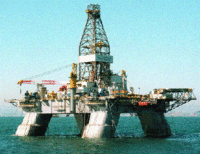
Since the April 2010 Deepwater Horizon blowout and explosion, the federal government as well as the offshore oil and gas industry have been undergoing major changes, including the issuance of regulations requiring operators of offshore facilities to adopt and implement comprehensive Safety and Environmental Management System (SEMS) programs by 15 November 2011
-
-
Nuclear waste repositories in suburbia?
Finding sites for nuclear waste storage is a growing problem, with decision makers running into the “not in my back yard” problem; the demise of Nevada’s Yucca Mountain project is but the latest example; researchers find that acceptance of sites for spent nuclear fuel repository may well depend on gender and economic background: in Finland, at least, affluent men more often are more receptive to the idea of locating such facilities near their neighborhoods than women or disadvantaged people
-
-
Security increases around Pennsylvania nuclear disposal site
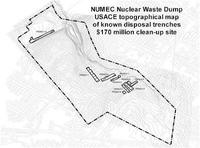
Security around a nuclear waste site in western Pennsylvania has been upgraded, with DHS armed security guards replacing private guards around the site; the reason for the elevated security is the finding, by the Army Corps of Engineers, of more “complex” nuclear materials on the site; it was originally believed that the site contains only low-level nuclear material
-
-
Automated pavement crack detection and sealing system to extend roadways life
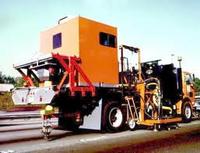
Researchers from the Georgia Tech Research Institute developed a prototype automated pavement crack detection and sealing system; in road tests, the system was able to detect cracks smaller than one-eighth-inch wide and efficiently fill cracks from a vehicle moving at a speed of three miles per hour
-
-
Knee-strapped power harvester to do away with batteries

Battery-powered devices may soon be a thing of the past; researchers have created an innovative energy harvester to power some of the latest wearable gadgets; the energy harvester, strapped to the knee joint, converts knee motions into energy
-
-
Fracking poses low risk for causing earthquakes
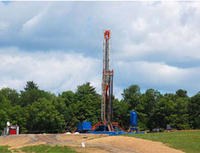
Fracking has a low risk for inducing earthquakes that can be felt by people, but underground injection of wastewater produced by hydraulic fracturing and other energy technologies has a higher risk of causing such earthquakes, says a new report
-
-
New research into flood impacts in the South of England -
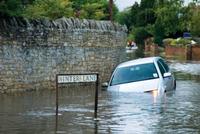
Researchers have developed and applied a method for understanding the effects and impacts of coastal flooding across the south coast of the United Kingdom, which could contribute to more effective flood forecasting, defense design, and land use planning
-
-
Seabed carpet could harness wave energy
A synthetic “seabed carpet” that mimics the wave-damping effect of a muddy seafloor could be used to extract energy from waves passing over it. As well as offering a new way to produce clean and cheap electricity, the carpet — which has not yet been built — could be used to protect coastal areas against strong waves and provide areas of safe haven for boats in stormy seas
-
More headlines
The long view
Water Wars: A Historic Agreement Between Mexico and US Is Ramping Up Border Tension
As climate change drives rising temperatures and changes in rainfall, Mexico and the US are in the middle of a conflict over water, putting an additional strain on their relationship. Partly due to constant droughts, Mexico has struggled to maintain its water deliveries for much of the last 25 years, deliveries to which it is obligated by a 1944 water-sharing agreement between the two countries.
Trump Is Fast-Tracking New Coal Mines — Even When They Don’t Make Economic Sense
In Appalachian Tennessee, mines shut down and couldn’t pay their debts. Now a new one is opening under the guise of an “energy emergency.”
Smaller Nuclear Reactors Spark Renewed Interest in a Once-Shunned Energy Source
In the past two years, half the states have taken action to promote nuclear power, from creating nuclear task forces to integrating nuclear into long-term energy plans.
Keeping the Lights on with Nuclear Waste: Radiochemistry Transforms Nuclear Waste into Strategic Materials
How UNLV radiochemistry is pioneering the future of energy in the Southwest by salvaging strategic materials from nuclear dumps –and making it safe.
Model Predicts Long-Term Effects of Nuclear Waste on Underground Disposal Systems
The simulations matched results from an underground lab experiment in Switzerland, suggesting modeling could be used to validate the safety of nuclear disposal sites.
